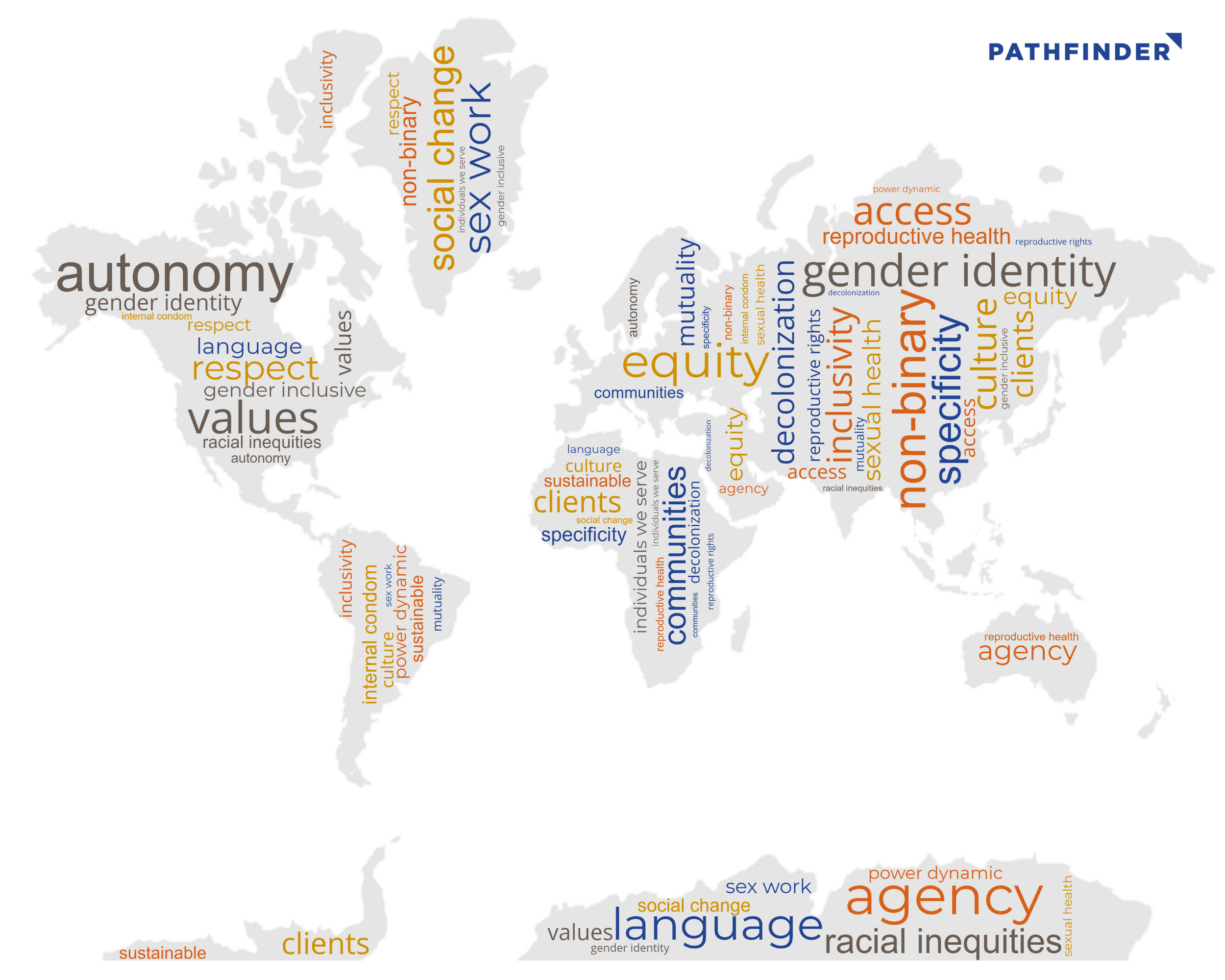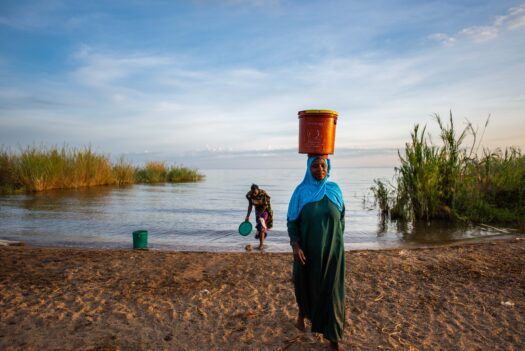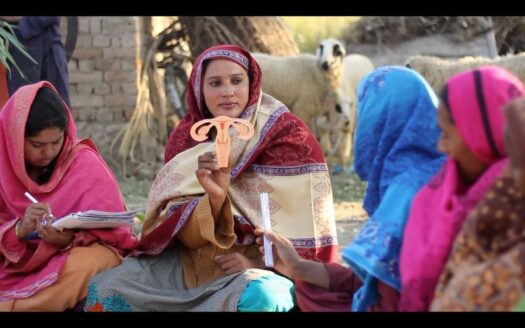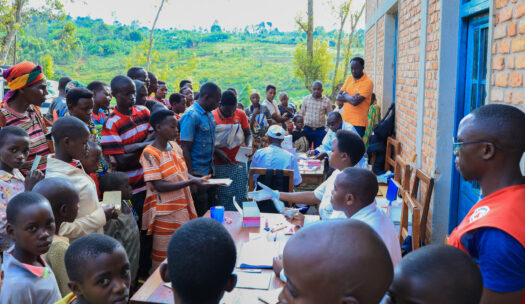A growing number of organizations are examining their values, practices, and language, and I am thankful that some of them are publicly writing and speaking about it.
Liz Furtell
Introduction
As global health communicators, we intentionally use certain words and phrases to convey the value of work, share important learnings, engage our audiences, and advocate for change. Language plays an outsize role in shaping how our work is perceived, and the nature of the work itself. Language influences culture, shifts power dynamics, and drives social change.
The global reckoning with pervasive racial, economic, health, and gender inequities continues, and along with it, organizations, including our own, are attempting to “decolonize” the way we do business. The decolonization movement within the global health sector seeks to move significant authority and resources from donor countries—like the US—into the hands of the people closest to the work. To be successful, we must examine how we use language at the same time as we reimagine our organizational structures, policies, and practices. We must ensure the language we use drives and reflects the equitable power dynamics we are trying to achieve.
Social change requires collaboration, conversation, and community, and organizations must work together to collectively move toward a more inclusive, equitable, sustainable, and effective approach to global health. That’s why we have come together as writers and communicators from different organizations to engage in a dialogue about language and share what we know with others in our sector. We don’t have all of the answers, but we hope by sharing our experiences, we can help you along the way.
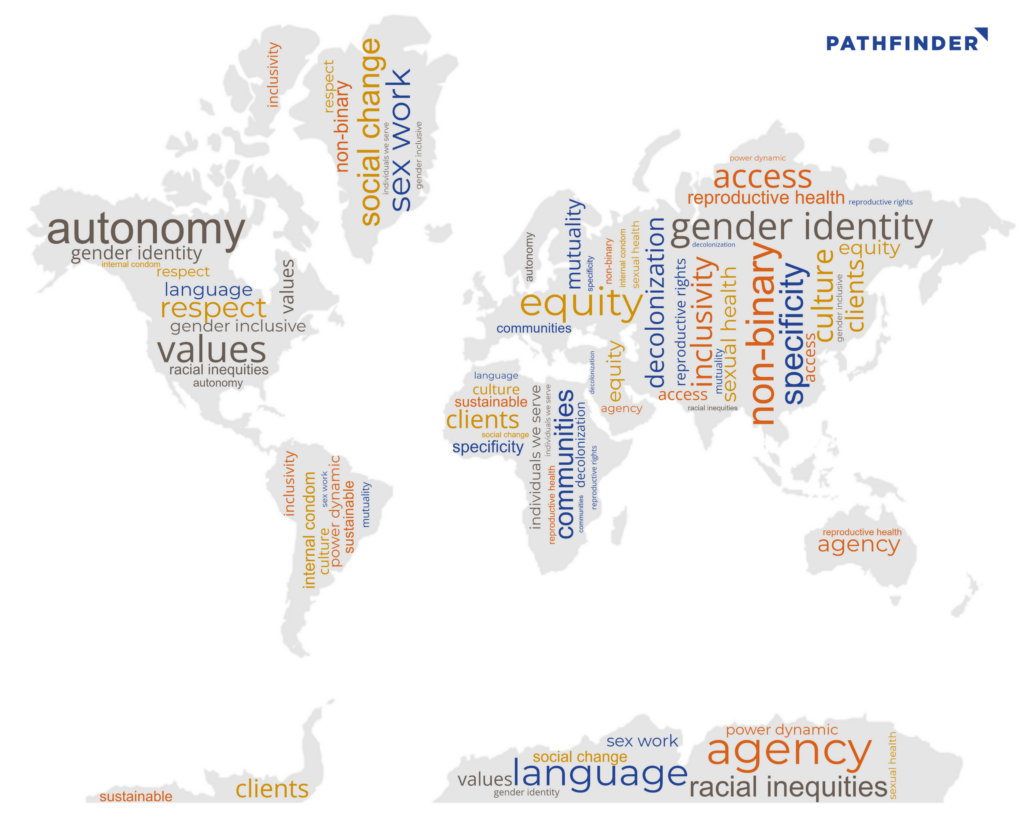
Tell us about your “language reimagination” process. How did you get started, what sources did you use, how did you engage others, etc.?
Amy: We embarked on this journey in earnest last summer, 2020, when our President and CEO, Traci L. Baird, asked me to lead what we have been calling a “language refresh” initiative. It admittedly felt like an incredibly daunting task at first, but thankfully I was able to engage several smart and caring colleagues equally interested in the work and willing to dedicate their own ideas and energy—one of whom provided the suggestion that really enabled me to begin to imagine how to move forward: start small. And that’s what we did. We selected one topic, convened a small group of technical leaders and communicators, and got to work. We shared what literature we could find from other leading sexual and reproductive health organizations. We discussed internally produced publications (the great and the not-so-great). We outlined and drafted and restructured and revised and repeated it all until we produced our first language guide. And then we set out to do another and another—each time learning from the previous experience and engaging new and different colleagues and adjusting our approach as needed until we had developed a set of initial language guides and principles around abortion; adolescent and youth sexual and reproductive health and rights; gender, sex, and sexuality. And, we have recently added one more, focused on Maternal and Obstetric Care.
Liz: When we began working on an update to our style guide in early 2021, we knew that one of the major updates should be the addition of an articulation of the values that guide our language use (mutuality, inclusivity, and specificity) and an update to our preferred terminology with the rationale for our preferences. Months earlier, I took PopWorks Africa’s eLearning platform, which explores race, privilege, and power dynamics in the global health sector. The readings and discussions in that course, along with pieces published by fellow learners, such as Ann Hendrix-Jenkins’ “It’s Time to Put an End to Supremacy Language in International Development,” helped guide our thinking about our mission, values, and work; the way we view them; and the language we use to articulate them. We also looked at similar guidance published by fellow organizations including EngenderHealth, PATH, Bond, and UNAIDS. When updating our preferred terminology, we focused on three categories: technical, geographic, and programmatic. We drafted guidance based on our research and then convened a group of internal experts, including technical advisors, program leads, advocates, communications professionals, and diversity, equity, and inclusion experts, to review and weigh in on the draft guidance. Finally, we asked an external consulting group that specializes in equity and cultural responsiveness to provide input. Even now as we work toward a final draft, we recognize that as cultures, mindsets, and knowledge evolve, so will our guidance; thus, we view it as a living document.
Can you talk about some of the key challenges you faced in developing and implementing language guidance at your respective organizations?
Liz: Pathfinder currently works in more than 20 countries, each with its own unique contexts, cultures, values, and norms. Therefore, while it is important to articulate our values and preferences at the global level, communicators must understand their varying audiences and tailor their language accordingly. For example, while some settings are increasingly recognizing nonbinary, gender-inclusive language, other settings understand gender in binary terms and might feel confused or alienated by language with which they are unfamiliar or that they do not feel reflects their reality. Respecting all people and at the same time recognizing and respecting cultural differences is important.
Another challenge is that in many cases there are not clear “right” and “wrong” answers about which terms to use and which to avoid. Even colleagues from the same culture who do similar work and hold similar values can have different opinions and perspectives. For example, some people feel that “low- and middle-income countries” or “Global South” are good alternatives to “developing countries,” while others view those terms as problematic. However, I’ve found that most people seem to agree that the more specific we can be, the more we avoid problematic language. If we name a specific country, group of countries, or region, then we do not have to use any of the aforementioned terms.
Amy: I think the most challenging aspects of this work are overcoming our own insecurities, identifying and then countering our own biases, and holding each other accountable for doing both of those things while also offering ourselves and each other grace. There is a degree of discomfort with being responsible for creating guidance that may not immediately resonate with all of our peers or that may seem progressive today but become outdated tomorrow. What if I interpreted the literature wrong or if I missed the latest conversations on this issue? What if my colleague disagrees or worse is offended? There are many disconcerting feelings associated with this work and, at least for me, it’s impossible to take the personal aspect out of the equation. It feels different than, for instance, accidentally omitting a serial comma. The only way to counter these challenges is to simply collect one’s courage and move forward focused on how the work will contribute to a better future for all.
What kinds of responses have you received so far?
Amy: Overall the response has been positive. Within the organization, quite a few colleagues have expressed enthusiasm for the guidance that we have developed so far as well as interest in exploring other topics. Some have asked questions and shared varying levels of trepidation around how to use the language guides, particularly where the guidance is more nuanced, and it has been energizing to have deeper conversations around our organizational values and opportunities for employing inclusive, respectful language to support our mission. Additionally, we’ve received similar feedback from external partners, including the conversation following my blog from last spring, which sparked the idea for this blog as well as another discussing our motivation and approach from earlier this month. A couple colleagues have also commented that the blog and the guides have served as a catalyst for conversations with their friends and family members outside our sector, which was somewhat unexpected but quite exciting to hear!
Liz: We haven’t yet released our final guidance on language use, but I look forward to the responses, questions, and continued conversations with colleagues around the world when we do. In the meantime, I have been energized by the conversations we’ve had internally. As a writer, I’m interested in the ability of language to shape and shift knowledge, understanding, power dynamics, and culture. It has been heartening to see how many others at my organization also grapple with and care about the language we use. I’ve learned so much from listening to their perspectives. Though our final guidance has yet to be formally released, Pathfinder writers and communicators have begun using it, and I have already seen its influence on some of our written deliverables, from proposals to publications. Writers and reviewers are more consciously striving to ensure our language reflects our respect for our program participants, stakeholders, and colleagues around the world.
I think the most challenging aspects of this work are overcoming our own insecurities, identifying and then countering our own biases, and holding each other accountable for doing both of those things while also offering ourselves and each other grace.
Amy Agarwal
What advice would you give other organizations looking to examine the language they use and develop language guidance?
Liz: There is no need to start from scratch. In 2020, the COVID-19 pandemic brought the world’s pervasive racial, gender, health, and economic inequities into stark view, and the murders of Breonna Taylor, George Floyd, and too many other Black Americans in the US brought urgency and energy to a global movement toward racial justice. A growing number of organizations are examining their values, practices, and language, and I am thankful that some of them are publicly writing and speaking about it. When I was beginning to think about our guidance, I attended webinars and panel discussions hosted by leading organizations like Aid Re-imagined and PopWorks Africa who convened diverse, courageous experts from around the world who were willing to share their raw experiences and blunt assessments of the state of global health. I also read the guidance from the organizations I mentioned a little earlier, much of which articulated the concepts I had been thinking about. My colleagues and I shared these resources with each other, and they gave us a common baseline of understanding from which to begin.
Amy: Gather your people and gather your intentions first. Establish a trusted team committed to change and define your expectations. Prepare yourself mentally to do the work and while you’re holding one another accountable, remind yourselves that you are bringing your best intentions to this challenge. Also, start small, see what conversations are already happening, and build from there. While there may not be a plethora of guidance on every subject, I found that reading about language shifts in the field of mental health and even criminal justice helped me better understand my own biases more broadly and better identify biases that existed within the terminology in our sector that we have all come to accept as simply the standard.
Call to Action
We call on others in our sector to share their experiences with reimagining the ways they communicate. We are all learning as we go, and we all must learn from each other. Reach out to communications@pathfinder.org and publicist@engenderheath.org to share your stories and resources.
